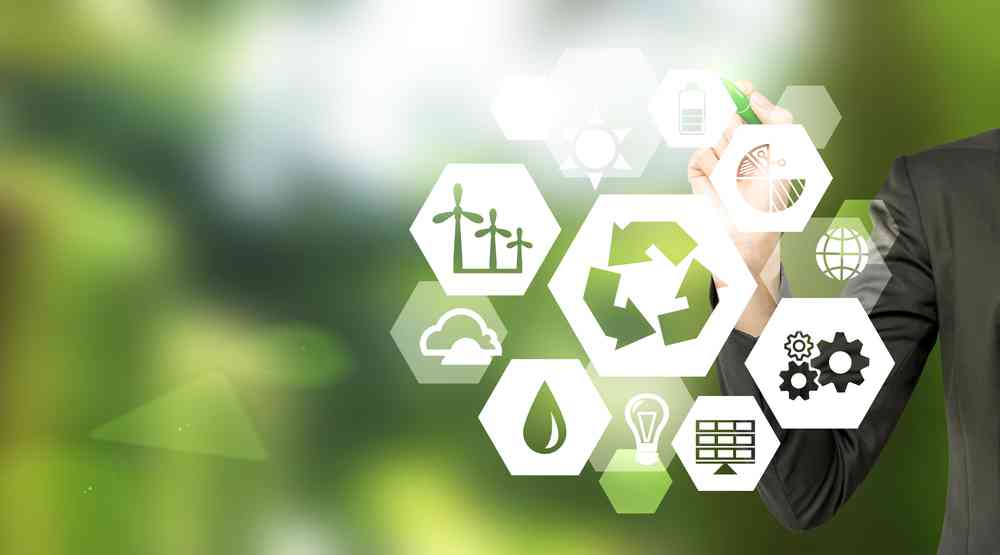The sun revolves around the Earth.
640K is all the computing power anyone will ever need.
Environmental sustainability and business interests are mutually exclusive.
What do all three of these statements have in common?
At one point in our history, they were accepted as fact. Unfortunately, one of these statements is still believed by a significant segment of our society. In the hopes of dispelling a lingering myth, I'd like to share some insight about the connected nature of sustainability and profitability in business.
Changing demographics
At one time, sustainability was viewed as an investment that dipped into profits and often came at the cost of business efficiency. There was also limited perceived shareholder and customer value from these costly investments. But it only takes a glance at global headlines, a peek into any classroom, or review of many organizations' policies to see that times have changed. The combination of millennial contingent that now makes up the largest customer and employee demographic, and a profoundly more educated and engaged global has led to focus and interest in 'making a difference'. The result? When it comes to choosing the products and services to consume and the organizations to work for, being viewed as a responsible corporate citizen has never been more important.
According to a 2019 brand survey from Edelman Research, 81% of respondents indicated "I must be able to trust the brand to do what is right," as a major factor when considering purchases. Equally interesting, a Fast Company study found that 40% of millennials said that they would take a pay cut to work for at an environmentally responsible company.
Bottom line, today, making sustainability a priority will not only attract the best employees, but it's also a smart route to more customers and better profitability.

Sustainability in IT
The IT industry needs to pay particular attention to the notion of reducing e-waste and its carbon footprint. Studies (World Economic Forum, 2019, UNEP) show that electronics will contribute more than 50 million metric tons of e-waste to landfill this year. In terms of combined weight, that's the equivalent of nine Great Pyramids of Giza. Sadly, only about 20% of that gets recycled.
This is why one of the hottest sustainability topics in the industry today is the circular (aka the closed-loop) economy - a model in which keeping a product in use and operational as long as possible is encouraged, and where waste is minimized through end-of-life recycling. To be effective, circular economy principles should be considered during the manufacturing and design phase of new technology and recycled content as well as ease of repair initiatives. In a truly circular economy, recycling becomes the second choice after the possibility of giving devices a second life, or repurposing is fully explored. The concept of life extension, either through repair or reuse is one of, if not the most important phase of the electronics circular economy. In fact, repurposing technology has a quantifiable environmental impact and reduces the need for new technology to be manufactured. Many manufacturers today publish information about the carbon footprint of the devices they produce, allowing clear visibility into CO2 emissions created in the manufacturing process as well as during the anticipated use of a device.
Putting theory into practice
Sustainability has been a passion of mine for as long as I can remember. It’s why I’ve chosen this area as a professional focus. But as far as we’ve come, we still have such a long way to go to significantly reduce our carbon footprint, especially in the IT sector.
That’s why I’m proud to be working with an amazing team at Compugen where we look at real, not symbolic, steps to help alleviate the problem. For example, Compugen Finance achieved a global first, when we developed a protocol whereby End-of-First-Life™ electronics could be converted directly into carbon credits. The carbon credits (and trade-in value) are generated when technology is traded in, refurbished and then repurposed for others to use; thus reducing the need for new technology to be produced. The organization that donated the items is then able to apply for carbon credits against their own carbon footprint.

To further encourage the reuse of devices, we recently developed an initiative, FutureValue, that provides cash and carbon credits at the moment of purchase. In exchange, organizations give those devices back to Compugen at end-of-first-life, so that we can refurbish, and then redeploy them to others. The program ensures a second life for IT assets that might otherwise have gone to landfill. Thus, providing a sustainable technology model and contributing to the circular economy.
The beauty of the closed-loop economy is that it provides a win-win in the sustainability/profitability discussion. And in doing so, should once-and-for-all dispel the myth that the two notions are incompatible.
We are not far from the day when the mere suggestion that sustainability and profitability are mutually exclusive will draw a confused reaction – perhaps similar to one that might come from the suggestion that…well…the sun revolves around the Earth.
To find out more about how you can promote sustainability in your workplace, or maybe just to discuss 17th Century scientific fallacies, reach out anytime. I’d love to hear from you.





.png)